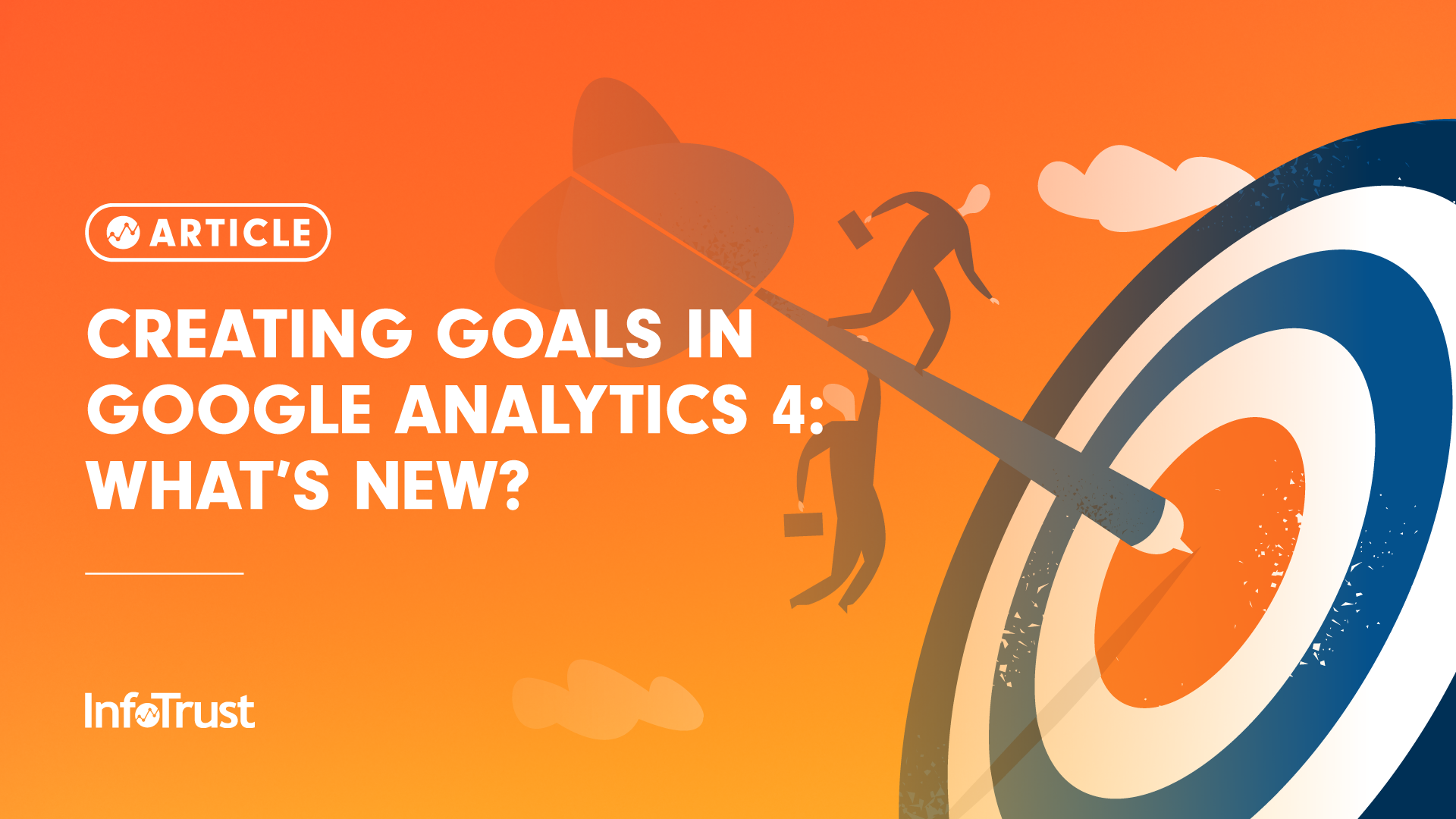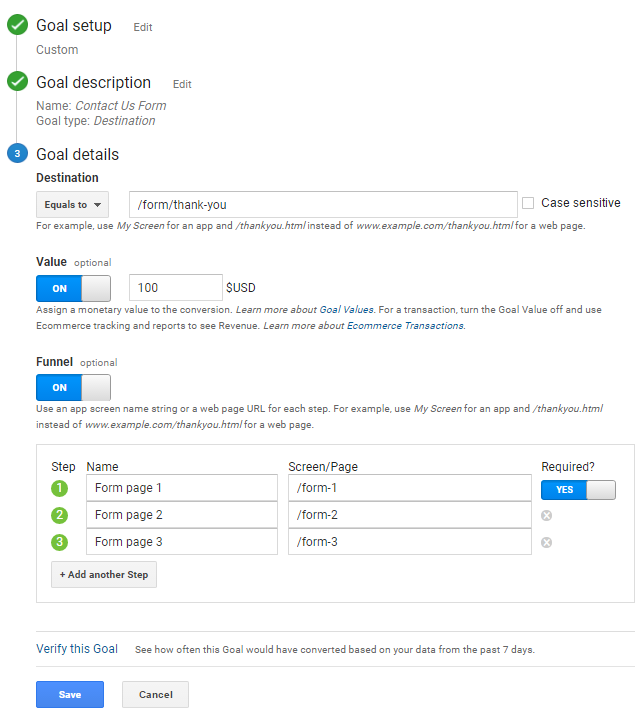What Data Is Google Analytics Goals Unable to Track: Critical Details
What Data Is Google Analytics Goals Unable to Track: Critical Details
Blog Article
Discover the Limitations of Google Analytics Goals: Revealing the Information Types That Remain Untrackable
As businesses progressively depend on data-driven decision-making, understanding the constraints of tools like Google Analytics ends up being vital. While Google Analytics Goals offer beneficial understandings into user communications, there exist data kinds that avoid tracking, posturing obstacles to a detailed understanding of customer actions. These untrackable information types question regarding the accuracy and completeness of the analytics information that companies heavily trust for their digital methods. Curious to uncover the surprise unseen areas in your information analysis process?
Insufficient User Trip Tracking
Insufficient customer trip tracking within Google Analytics can hinder the ability to properly evaluate individual actions. When the customer trip is not completely tracked, there are voids in the information that stop a comprehensive understanding of exactly how individuals interact with a website. This absence of understanding can bring about missed opportunities for optimization and improvements to the customer experience.
One usual issue with incomplete user journey tracking is the inability to see the complete course that users take in the past finishing an objective or leaving the website. Without this information, it is challenging to recognize where users might be encountering barriers or friction points that prevent them from transforming. Additionally, incomplete tracking can cover the effect of particular marketing initiatives or internet site changes on individual habits.
To address this constraint, it is vital to establish up appropriate tracking devices within Google Analytics to catch the entire customer journey. This may include establishing event monitoring, goal funnels, or utilizing devices like Google Tag Manager to guarantee that no essential interactions go unrecorded. By gaining a comprehensive sight of the customer trip, internet site owners can make more enlightened decisions to enhance customer interaction and drive conversions.
Acknowledgment Difficulties
Navigating via attribution obstacles in Google Analytics requires a complete understanding of exactly how various touchpoints contribute to the total conversion process. Acknowledgment challenges emerge from the complexity of modern-day customer journeys, where individuals interact with several channels prior to transforming. Google Analytics offers numerous attribution designs like initial touch, last touch, and linear, each providing a various perspective on how credit is designated to touchpoints along the conversion course. These models may not always precisely mirror the real effect of each touchpoint on the conversion.
One common attribution obstacle is the difficulty in attributing conversions to the proper source, especially in cases where users communicate with several channels before transforming. This can bring about errors in determining which advertising and marketing efforts are driving one of the most conversions. In addition, cross-device monitoring postures an additional attribution challenge, as users usually switch over in between gadgets throughout their trip, making it challenging to track their interactions effortlessly. Marketers must carefully evaluate and interpret acknowledgment information to make informed choices and maximize their advertising techniques efficiently.
Offline Conversions
Given the obstacles connected with attributing conversions properly in online channels, the measurement of offline conversions provides a substantial opportunity for marketers looking for a more detailed understanding of their customers' journey. Offline conversions describe actions that clients absorb the real world, such as making purchases in brick-and-mortar stores or over the phone, participating in events, or engaging with printed materials - what data is google analytics goals unable to track. These conversions are vital for companies that run both online and offline, as they offer beneficial insights into the performance of marketing projects across numerous touchpoints
Tracking offline conversions traditionally positioned a considerable difficulty for marketers, as click this link it was challenging to link these actions back to certain on-line interactions precisely. With innovations in innovation, such as the integration of CRM systems, special identifiers, and coupon codes, businesses can currently link the gap in between online and offline information to acquire a more holistic view of consumer her comment is here actions. By effectively gauging offline conversions, marketing professionals can enhance their methods, designate resources much more efficiently, and eventually enhance the overall client experience.
Cross-Device Monitoring
Cross-device tracking plays a crucial role in understanding the interconnected nature of customers' digital interactions throughout several tools. In today's omnichannel world, where users flawlessly change in between desktops, tablet computers, and smartphones, tracking their actions across these gadgets is crucial for marketing experts to acquire a thorough view of their customer trip.

Furthermore, personal privacy problems and policies such as GDPR and CCPA have better complicated cross-device tracking. With users demanding even more control over their information and boosted limitations on tracking innovations, marketers need to find cutting-edge and privacy-compliant methods to attach customer interactions across devices.
Dynamic Web Content Engagement
Understanding user involvement with vibrant web content is essential in enhancing electronic advertising and marketing approaches for boosted target market communication. Dynamic web content describes site elements that alter based upon individual behavior, preferences, or various other factors, offering a customized experience. Tracking customer communications with dynamic content postures obstacles for typical analytics tools like Google Analytics.
While Google Analytics can track standard interactions like clicks and web page sights, it may battle to capture even more nuanced interactions within dynamic web content. what data is google analytics goals unable to track. Metrics such as time invested in certain dynamic aspects, hover actions, or communications within pop-ups are often not conveniently quantifiable utilizing conventional monitoring techniques. This limitation prevents marketers' capability to fully grasp exactly how customers are engaging with vibrant material and customize their strategies appropriately

Conclusion
In final thought, Google Analytics goals have constraints in tracking insufficient customer trips, attributing conversions precisely, catching offline conversions, tracking cross-device communications, and determining vibrant content engagement. These constraints highlight the significance of checking out added monitoring approaches and devices to obtain a more detailed understanding of individual habits and conversions beyond what Google Analytics can supply.
While Google Analytics Goals offer useful insights into user interactions, there exist information types that elude tracking, posing difficulties to a comprehensive understanding of user behavior.Insufficient customer trip tracking within Google Analytics can hinder the ability to properly analyze customer actions. When the individual trip is not totally tracked, there are voids in the information that avoid a comprehensive understanding of how users connect with a website.One common issue with insufficient individual journey monitoring is the lack of ability to see the full path that customers take in the past finishing a goal or leaving the website. By getting a comprehensive view of the user trip, internet site owners can make more educated choices to improve individual involvement and drive conversions.
Report this page